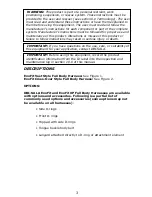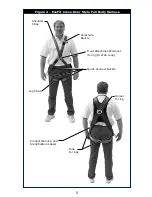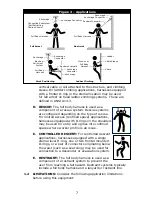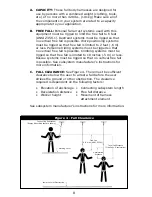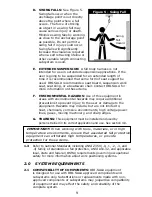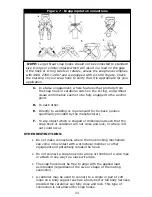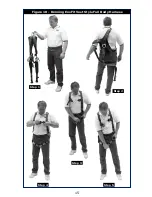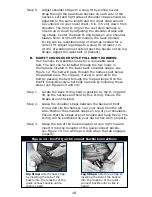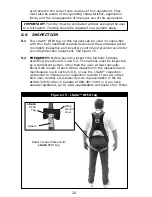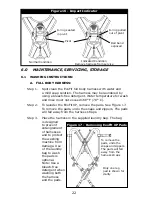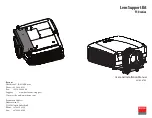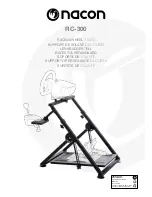
8
A. CAPACITY:
These full body harnesses are designed for
use by persons with a combined weight (clothing, tools,
etc.) of no more than 420 lbs. (191 kg) Make sure all of
the components in your system are rated to a capacity
appropriate to your application.
B. FREE FALL:
Personal fall arrest systems used with this
equipment must be rigged to limit the free fall to 6 feet
(ANSI Z359.1). Restraint systems must be rigged so that
no vertical free fall is possible. Work positioning systems
must be rigged so that free fall is limited to 2 feet (.6 m)
or less. Personnel riding systems must be rigged so that
no vertical free fall is possible. Climbing systems must be
rigged so that free fall is limited to 18 inches (.5 m) or less.
Rescue systems must be rigged so that no vertical free fall
is possible. See subsystem manufacturer’s instructions for
more information.
C. FALL CLEARANCE:
See Figure 4. There must be sufficient
clearance below the user to arrest a fall before the user
strikes the ground or other obstruction. The clearance
required is dependent on the following factors:
• Elevation of anchorage • Connecting subsystem length
• Deceleration distance
• Free fall distance
• Worker height
• Movement of harness
attachment element
See subsystem manufacturer’s instructions for more information.
Figure 4 - Fall Clearance
Connecting Subsystem
(Energy Absorbing Lanyard shown)
Working Level
Free Fall
6 ft. max (ANSI Z359.1)
Deceleration
Distance
Total Fall Distance
(Free Fall + Deceleration)
Lower Level or Obstruction



